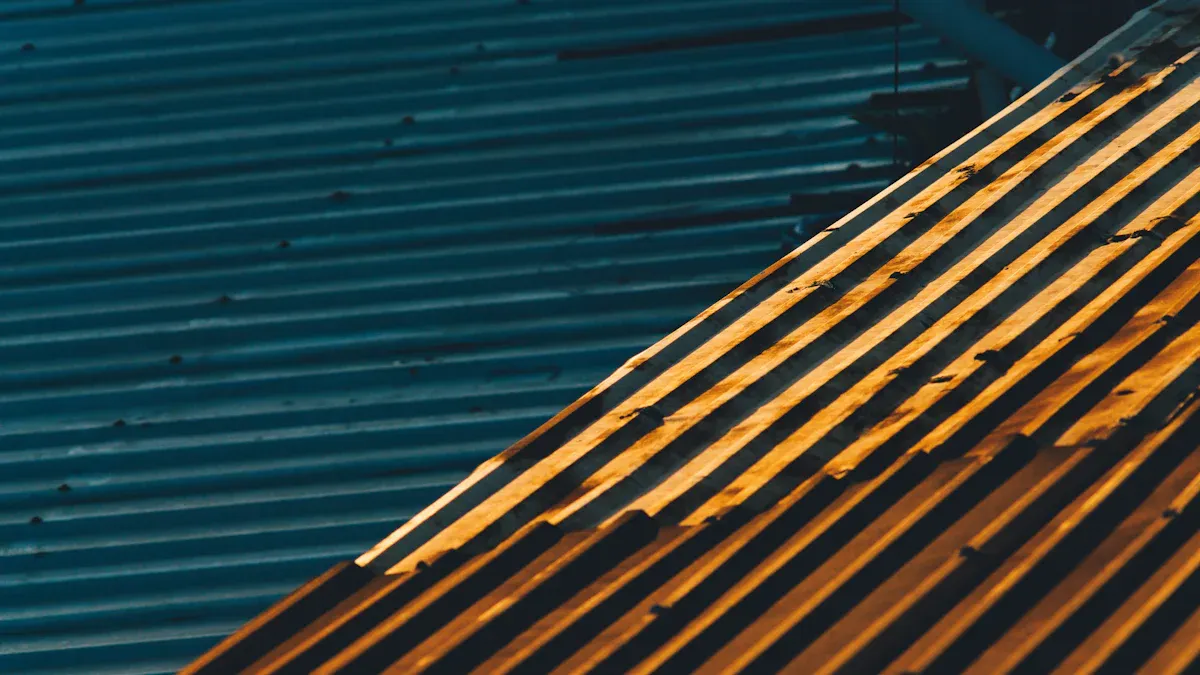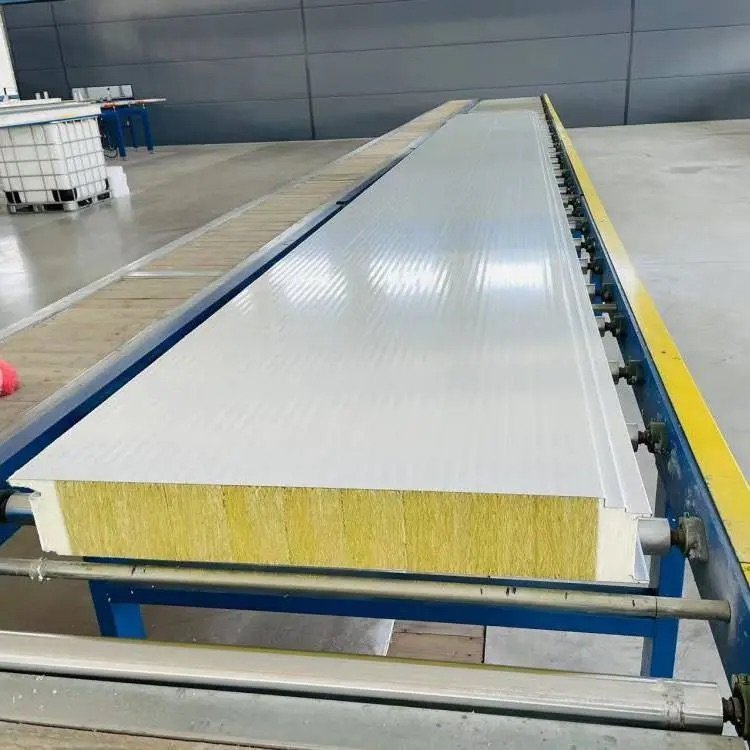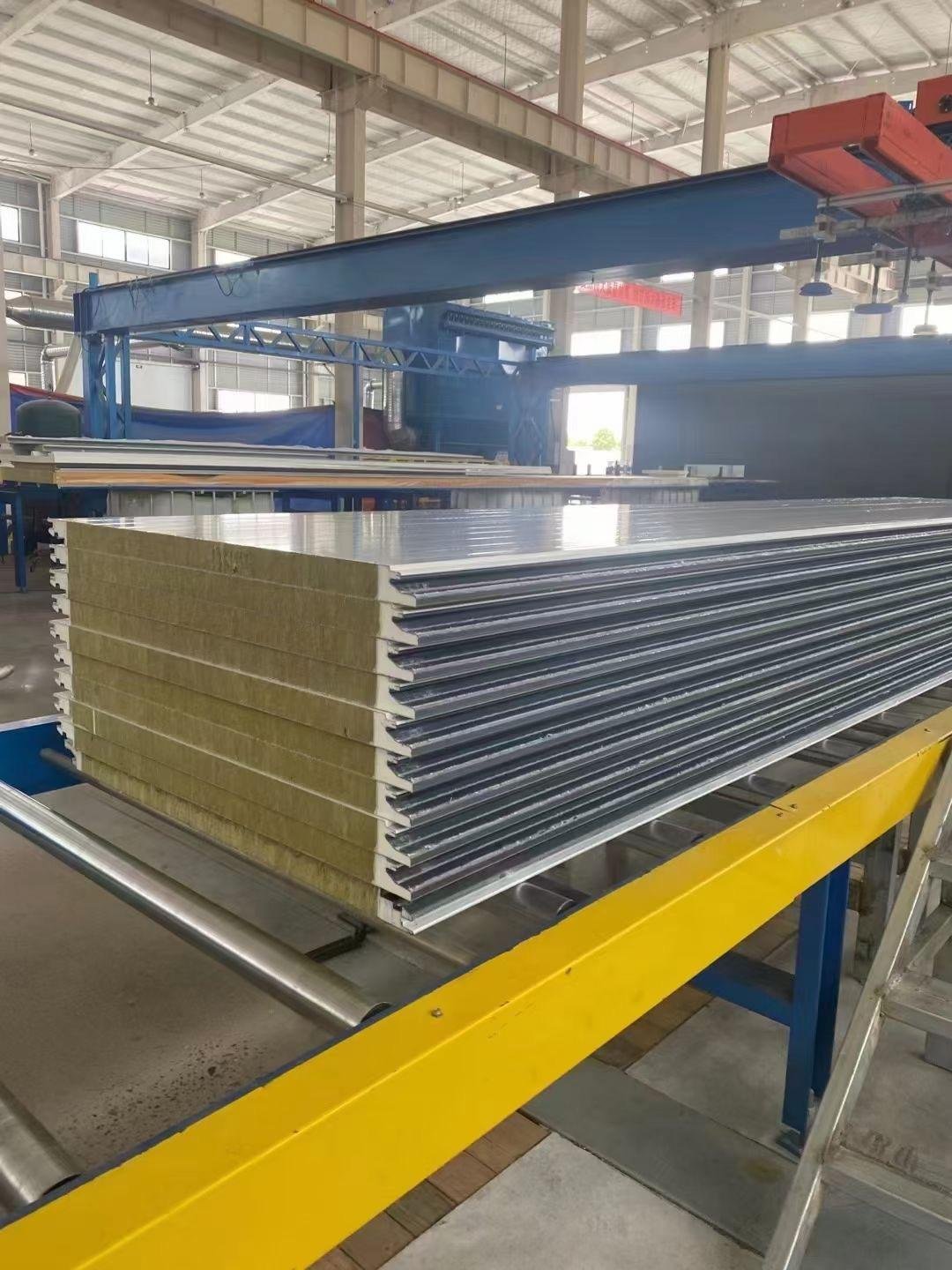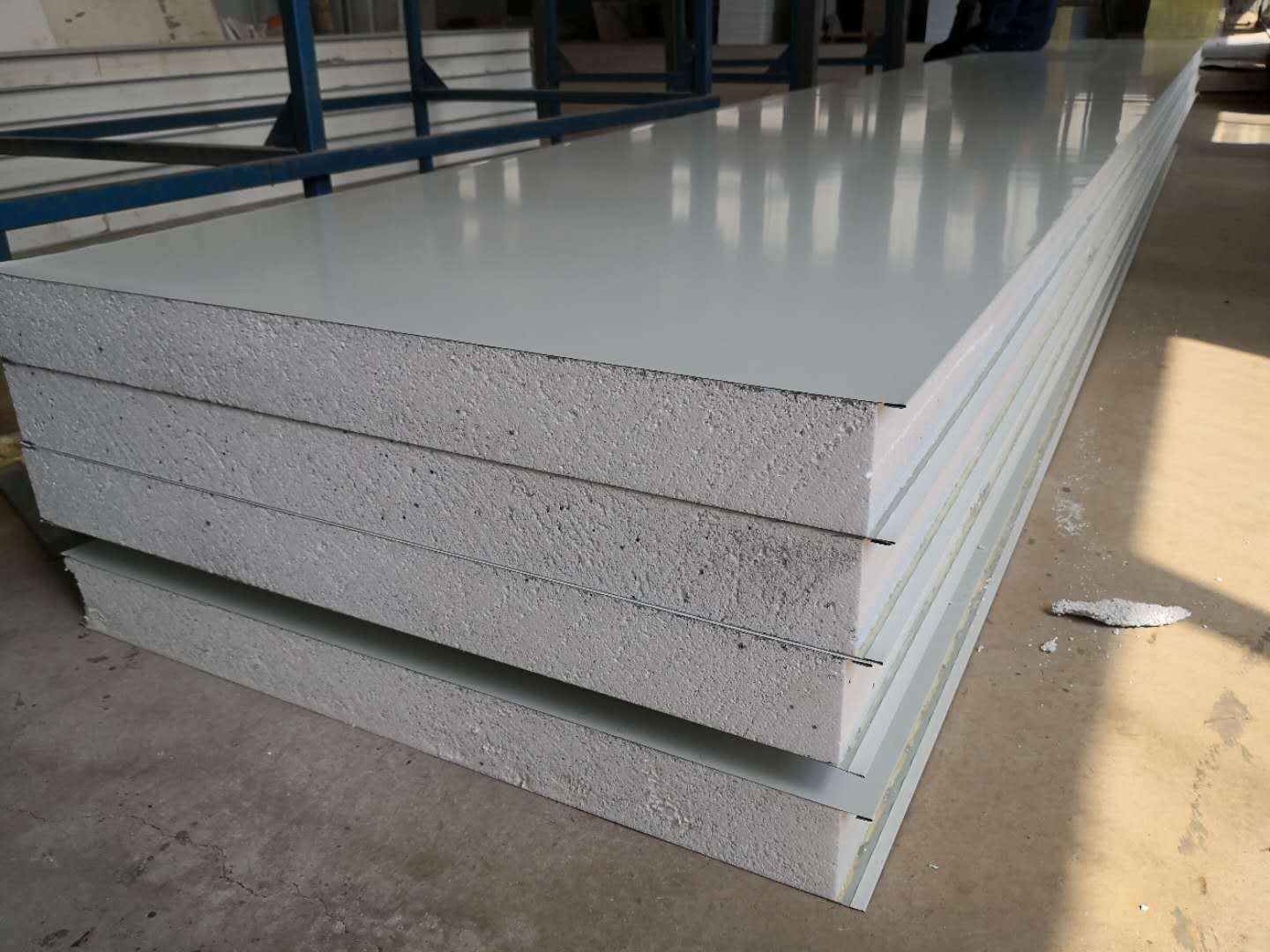
Comparing Steel and Aluminum Skins
Explore the differences between steel and aluminum skins.
Features | Steel Skin for PU Sandwich Panels | Aluminum Skin for PU Sandwich Panels |
|---|---|---|
Strength and Rigidity | Very strong, handles heavy loads. | Lighter, suitable for lighter tasks. |
Weight and Flexibility | Heavier but very tough. | Much lighter, easy to install. |
Corrosion Resistance | Needs treatment for rust prevention. | Naturally resists rust effectively. |
Durability and Longevity | Lasts long with proper care. | Good lifespan, especially in moist areas. |
Thermal Insulation | Keeps heat inside effectively. | Reflects heat, good for hot areas. |
Acoustic Insulation | Blocks sound better, ideal for factories. | Decent soundproofing, lighter material. |
Initial Costs | Generally higher due to strength. | Usually cheaper at first. |
Maintenance Requirements | Requires regular care to prevent rust. | Low maintenance, rust-resistant. |
Best Uses | Ideal for heavy-duty industrial applications. | Great for coastal and portable buildings. |
When picking Steel Skin for PU Sandwich Panels or aluminum skins, think about strength, weight, and durability. Steel Skin for PU Sandwich Panels is very strong and resists impacts well. This makes it great for tough jobs. Aluminum skins are light and flexible. They work best for projects needing easy transport and handling.
Key Takeaways
Pick Steel Skin for tough jobs needing strength and durability. It resists damage and lasts a long time.
Choose Aluminum Skin for light and rust-free needs. It suits coastal places and movable buildings.
Think about your project’s location. Steel is good for cold places, while aluminum fits hot, wet areas.
Material Properties
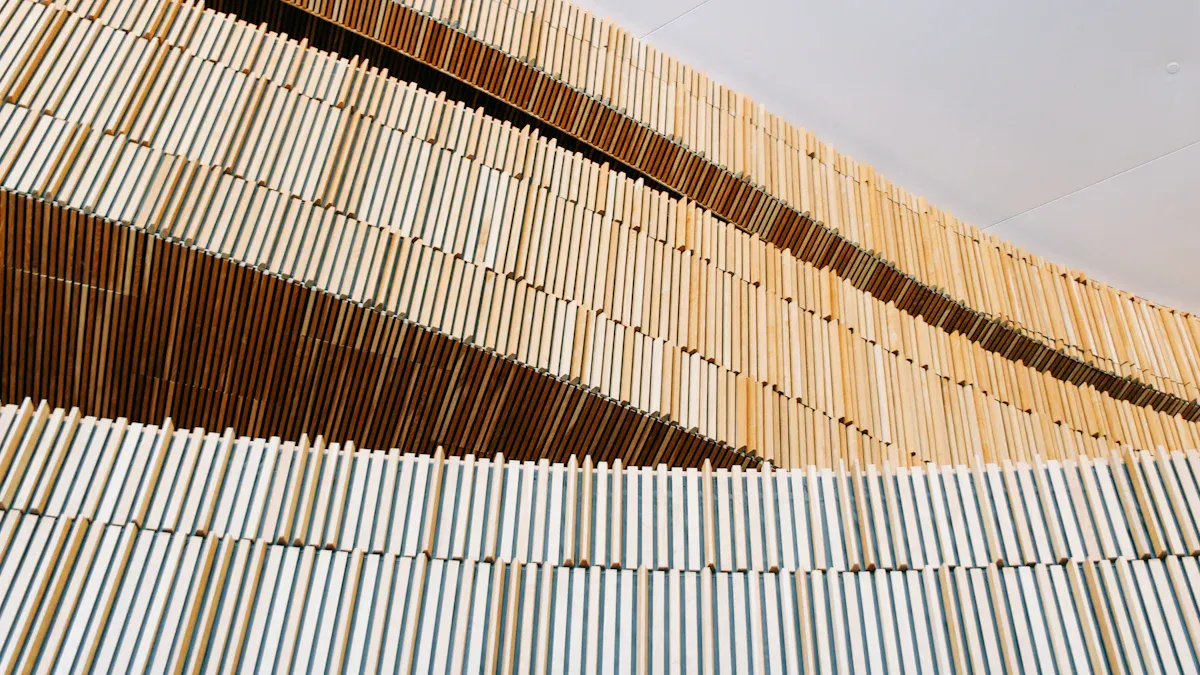
Strength and Rigidity
Steel Skin for PU Sandwich Panels is very strong. It stays firm and holds up under heavy loads. Steel is great for jobs needing strong support and impact resistance. Aluminum is not as strong as steel but works fine for lighter tasks. If your project needs to handle a lot of force, pick steel. Aluminum is better for projects that don’t need extreme strength.
Weight and Flexibility
Aluminum is much lighter than steel. This makes it easy to move and install. Its light weight also helps with creative designs. Steel is heavier but very tough. If you need something easy to carry, go with aluminum. If weight doesn’t matter and you want strong material, choose steel.
Corrosion Resistance
Both steel and aluminum resist rust well. Aluminum has a natural layer that stops rust, even in wet places. Steel can resist rust too, especially if coated or treated. But steel might need more care in very wet or salty areas. For damp or chemical-heavy places, aluminum is a good pick. For most other uses, steel works fine with proper upkeep.
Durability and Longevity

Environmental Resistance
Steel and aluminum skins handle weather differently. Steel is tough against impacts like hail or wind. It stays strong in rough conditions. Aluminum works well in humid or salty places. Its oxide layer stops rust, making it good for coastal areas. Think about your project’s environment to choose the right material.
Wear and Tear Over Time
Steel and aluminum wear out in different ways. Steel stays strong even with heavy use. It resists dents and scratches better than aluminum. This makes it great for busy or industrial spaces. Aluminum can dent easier but doesn’t rust. It looks good longer in wet places. For frequent handling or impacts, pick steel. For less stress, aluminum is fine.
Lifespan Comparison
How long these materials last depends on care and location. Steel can last many years if treated to stop rust. Aluminum also lasts long, especially where rust is a problem. Steel often stays stronger longer than aluminum. If you need something that lasts, steel is a solid choice.
Thermal and Acoustic Performance

Thermal Insulation Capabilities
Both steel and aluminum skins work well with PU cores. Steel keeps heat inside, making it great for cold places. Its solid build stops heat from escaping easily. Aluminum reflects heat better because of its natural traits. This makes it perfect for hot areas where less heat absorption is needed.
Tip: Think about the temperature. Use steel for cold areas and aluminum for warm ones.
Acoustic Insulation Properties
Steel skin blocks sound better. Its thick material absorbs noise and vibrations. This makes it ideal for factories or noisy spaces. Aluminum is lighter and gives decent soundproofing. It’s good for places where less noise control is okay.
For instance, use steel for studios or factories. For homes or lighter projects, aluminum works fine.
Energy Efficiency Impact
Energy savings depend on how the PU core and skin work together. Steel helps keep temperatures steady, cutting heating or cooling costs. Aluminum reflects sunlight, lowering cooling needs in sunny areas.
Note: Both save energy, but pick based on your project’s needs.
Cost and Maintenance

Initial Costs
Steel and aluminum skins have different starting prices. Steel, like stainless or galvanized, costs more because it’s strong and durable. Aluminum is lighter and usually cheaper at first. Here’s a simple price chart for PU sandwich panels:
License Type | Price Range (Approx.) |
|---|---|
Single User License | $1,898.24 |
Enterprise License | $4,738.77 |
Data Pack Excel | $1,898.24 |
You can pick from stainless steel, galvanized steel, or aluminum. Each has its own perks. Your budget and project needs will help you decide.
Maintenance Requirements
Steel skins need care to stop rust and stay looking good. This is especially true in wet or coastal areas. Coatings or treatments can make upkeep easier. Aluminum skins need less care. Their natural layer stops rust, making them great for damp or salty places.
If you want less work and cost for maintenance, aluminum is better. Steel is a good choice if you don’t mind doing regular care.
Long-Term Cost-Effectiveness
Steel lasts longer for tough jobs needing strength and durability. It handles impacts and wear well, giving it a long life. Aluminum doesn’t last as long but saves money in places with lots of moisture. Its light weight also makes moving and installing easier.
Think about what your project needs. Steel is best for heavy-duty work. Aluminum works well in light, rust-prone areas. Both are good choices if used in the right way.
Applications and Suitability
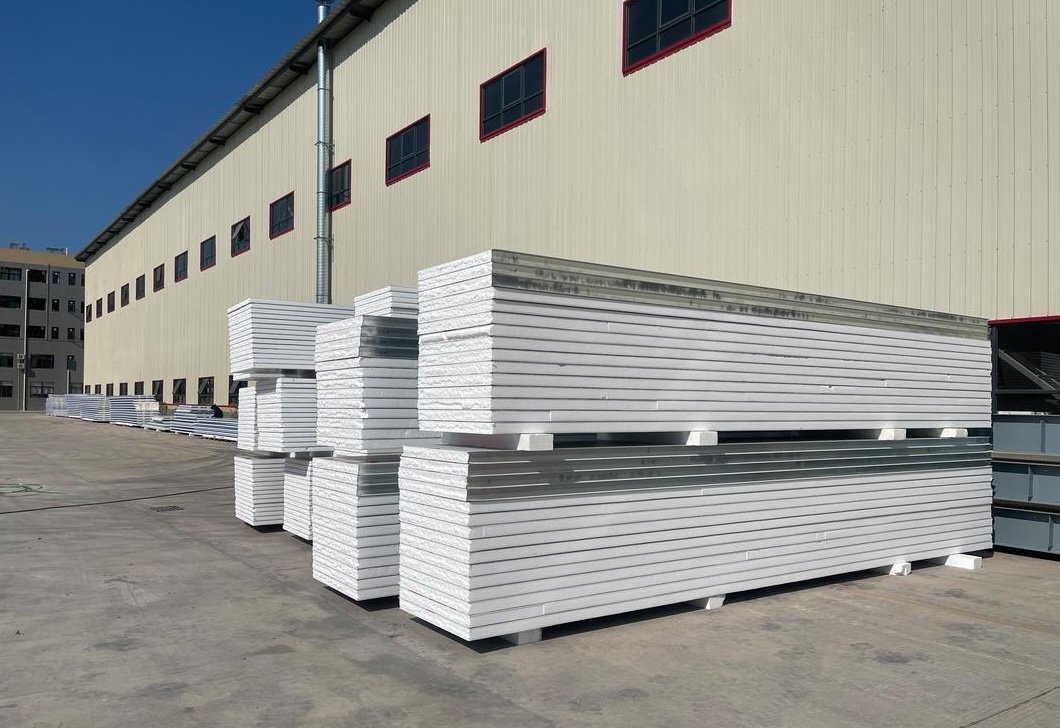
Best Uses for Steel Skin for PU Sandwich Panels
Steel Skin for PU Sandwich Panels is strong and long-lasting. It works well in factories, warehouses, and industrial buildings. These places often have heavy machines, and steel panels handle the weight. They also protect machines by keeping temperatures steady. For example, in factories, steel panels save time during construction and keep equipment safe.
Steel panels are also great for big projects like stadiums. They insulate well and help save energy, speeding up construction. If your project needs fire safety and soundproofing, steel panels are a smart pick. They are perfect for green office buildings aiming for certifications like LEED Platinum. Modular hotels also use steel panels because they meet strict thermal rules and are easy to assemble.
Application Example | Main Advantages |
|---|---|
Factory Construction | Faster building time, great insulation for machines. |
Olympic Stadiums | Strong insulation, lightweight, energy-saving, and quick to build. |
Green Office Buildings | Fire-safe, soundproof, and helped earn LEED Platinum certification. |
Modular Hotel Construction | Met thermal rules, flexible design, and quick to assemble. |
Best Uses for Aluminum Skin for PU Sandwich Panels
Aluminum skins are light and resist rust well. They are perfect for buildings near the coast where salty air can cause rust. Aluminum’s natural layer stops rust, making it great for wet areas. These panels are also good for portable buildings like temporary shelters or offices. Their light weight makes them easy to move and set up.
In hot places, aluminum reflects heat, keeping homes cooler. This helps lower cooling costs by reducing heat absorption. Aluminum is also flexible, making it great for creative building designs. You can create unique shapes without losing strength.
Recommendations for Different Industries
Different industries use these materials in special ways. Factories and construction sites need Steel Skin for PU Sandwich Panels for their strength. Coastal projects or mobile buildings benefit from aluminum’s light weight and rust resistance.
For saving energy, steel panels are better in cold places. Aluminum panels work best in hot areas. Modular builders like steel for its toughness and aluminum for easy transport. Think about your industry’s needs to pick the right material.
Steel Skin for PU Sandwich Panels is very strong and tough. It works best for heavy-duty jobs needing durability. Aluminum skins are light and resist rust well. They are great for coastal areas or portable buildings. Pick steel for strength and long-lasting use. Choose aluminum if weight and rust resistance are important. Always match the material to your project’s needs.
FAQ
What are the main differences between steel and aluminum skins?
Steel is stronger and lasts longer.
Aluminum is lighter and resists rust more easily.
Tip: Use steel for tough jobs and aluminum for light, rust-prone areas.
Which material is better for coastal areas?
Aluminum is best for coastal places. Its natural layer stops rust, even in salty air. Steel needs special coatings to avoid rust in these conditions.
How do steel and aluminum skins impact energy efficiency?
Steel keeps heat inside, making it great for cold areas. Aluminum reflects heat, helping lower cooling costs in hot places. Pick based on your climate needs.


